-
An Introduction to French Press Brewing
-
Key Elements for French Press Success
-
Grind Size: The Foundation of Flavor
-
Brew Time: Finding Your Sweet Spot
-
Water Temperature: Precision Brewing
-
Coffee-to-Water Ratio: Achieving Balance
-
The Bloom: Unleashing Aromas
-
Step-by-Step French Press Brewing Guide
-
Pro Tips and Variations
-
The Advantages of French Press Coffee
An Introduction to French Press Brewing
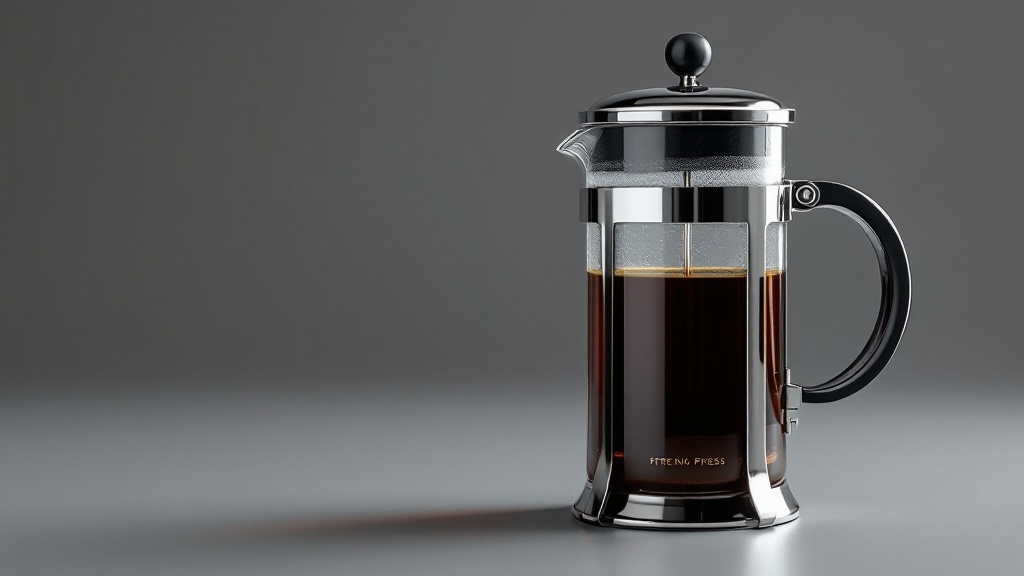
This guide delves into the techniques for brewing exceptional coffee using a French press. We’ll cover step-by-step instructions, barista tips, and the science behind achieving that perfect, rich cup at home.
“A 1:15 coffee-to-water ratio is the sweet spot for French press brewing–balancing strength and flavor without bitterness.”
– James Hoffmann, World Barista Champion and Author of *The World Atlas of Coffee*
| Technique | Description | Impact on Flavor |
|---|---|---|
| Grind Size | Use coarse-ground coffee beans to prevent sediment in your cup. | Ensures a clean, rich, and full-bodied flavor. |
| Water Temperature | Heat water to 195-205°F (90-96°C) for optimal extraction. | Prevents bitterness and enhances the coffee’s natural sweetness. |
| Brewing Time | Steep coffee for 4 minutes to achieve balanced extraction. | Over-extraction leads to bitterness; under-extraction results in weak flavor. |
| Plunge Technique | Press the plunger slowly and steadily to avoid agitation. | Minimizes sediment and ensures a smooth, consistent brew. |
| Ratio of Coffee to Water | Use a 1:15 coffee-to-water ratio (e.g., 30g coffee to 450ml water). | Balances strength and flavor without being too weak or overpowering. |

Optimal Coffee-to-Water Ratio
The coffee-to-water ratio is a critical factor in French press brewing, directly influencing the strength, flavor, and extraction of the final cup. A standard ratio of 1:15 (coffee to water by weight) is widely recommended for achieving a balanced brew. For example, using 30 grams of coffee grounds requires 450 milliliters of water. This ratio ensures proper extraction without over-saturation or under-extraction, which can lead to bitter or weak coffee, respectively.
Perfecting Coffee Brewing Ratios
- Use a 1:15 to 1:18 coffee-to-water ratio for balanced flavor, adjusting based on personal taste preferences.
- For a stronger brew, try a 1:12 ratio, but avoid exceeding 1:10 to prevent over-extraction and bitterness.
- Lighter roasts often benefit from a 1:16 ratio to highlight their delicate, nuanced flavors.
- Invest in a digital scale for precise measurements, as volume-based methods (e.g., tablespoons) can vary widely.
- Experiment with ratios when using different brewing methods (e.g., French press, pour-over) to optimize results.
- Water temperature should be 195-205°F (90-96°C) to complement the chosen ratio and extraction process.
Key Elements for French Press Success
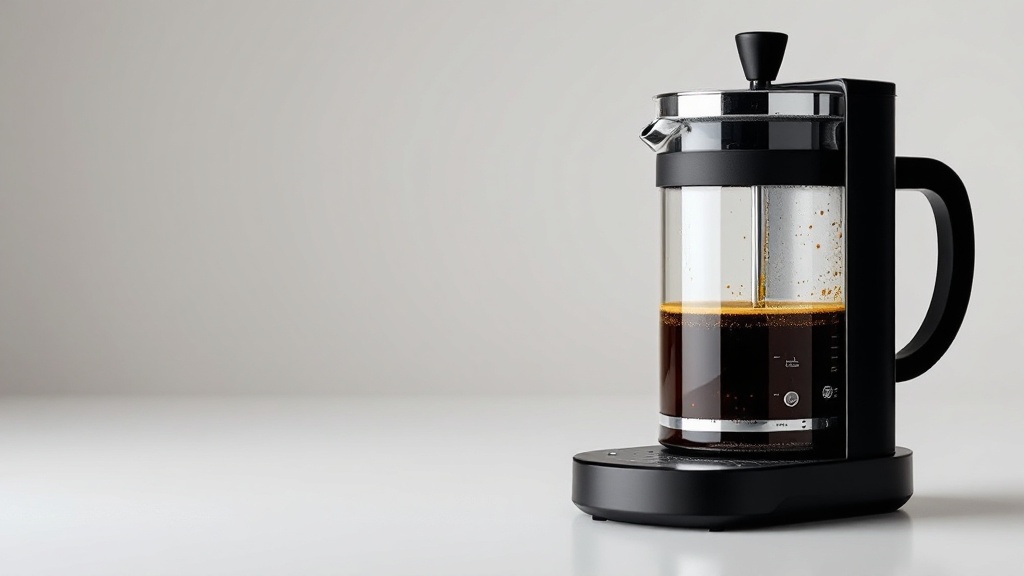
Grind Size: The Foundation of Flavor
Use a coarse grind, similar in texture to sea salt or steel-cut oats. A finer grind will lead to over-extraction and excessive sediment in your cup.
“A coarse grind and precise water temperature (195°F-205°F) are non-negotiable for a balanced, sediment-free French press brew.”
– James Hoffmann, World Barista Champion & Author of *The World Atlas of Coffee*
| Ratio (Coffee:Water) | Strength & Flavor Profile | Best Use Case |
|---|---|---|
| 1:15 | Balanced flavor, optimal extraction | Standard French press brewing for a well-rounded cup |
| 1:12 | Stronger brew, bold flavor | For those who prefer a more intense coffee experience |
| 1:16 | Lighter, nuanced flavors | Ideal for lighter roasts to highlight delicate notes |
| 1:18 | Milder, less intense | For those who prefer a lighter, more subtle coffee |
| 1:10 (Not Recommended) | Over-extracted, bitter | Avoid exceeding this ratio to prevent bitterness |
Choosing the Right Grind
- Coarse grinds are ideal for French press and cold brew methods, ensuring balanced extraction.
- Medium grinds work best for drip coffee makers, offering a clean and consistent flavor profile.
- Fine grinds are suited for espresso machines, maximizing surface area for intense flavor extraction.
- Grind consistency is key; uneven grinds can lead to both under-extraction and over-extraction in the same brew.
- Invest in a quality burr grinder for precise control over grind size and uniformity.
Brew Time: Finding Your Sweet Spot
The optimal brew time generally falls between 4 and 8 minutes. Experiment to find your preference; longer steeps (with a coarse grind) often yield a cleaner, more balanced flavor.
Optimizing Brew Time Tips
- Use a timer to ensure consistency and avoid over-extraction, which can lead to bitterness.
- For lighter roasts, aim for the shorter end of the range (4-5 minutes) to preserve delicate flavors.
- Dark roasts benefit from longer brew times (6-8 minutes) to enhance richness and depth.
- Adjust grind size accordingly: finer grinds require shorter brew times, while coarser grinds allow for longer steeping.
- Experiment with water temperature; slightly cooler water (195°F) pairs well with longer brew times for smoother results.
Water Temperature: Precision Brewing
Use water heated to between 195°F and 205°F (just off a rolling boil). Too hot, and you’ll scorch the beans; too cool, and extraction will be insufficient.
Optimal Water Temperature Tips
- Invest in a reliable thermometer to ensure water stays within the 195°F-205°F range for consistent results.
- For lighter roasts, aim for the higher end (200°F-205°F) to enhance extraction of subtle flavors.
- For darker roasts, use slightly cooler water (195°F-200°F) to avoid over-extraction and bitterness.
- Preheat your brewing equipment with hot water to maintain temperature stability during the brewing process.
- If using a kettle, stop heating just before boiling (around 205°F) to prevent scalding the coffee grounds.
- Adjust water temperature based on altitude, as boiling points decrease at higher elevations.
Coffee-to-Water Ratio: Achieving Balance
A standard ratio is 1:15 (e.g., 30g coffee to 500g water). Adjust this ratio to your taste; stronger coffee requires a higher coffee-to-water ratio.
Adjusting Coffee Strength
- For a milder brew, use a 1:17 ratio (e.g., 25g coffee to 425g water).
- For a bolder flavor, try a 1:13 ratio (e.g., 35g coffee to 455g water).
- Experiment with ratios between 1:12 and 1:18 to find your ideal balance.
- Use a kitchen scale for precise measurements to ensure consistency.
- Grind size and brew time also impact strength; adjust accordingly.
The Bloom: Unleashing Aromas
The bloom phase is crucial! Saturate the grounds with a small amount of water, stir gently, and let it rest for 30-45 seconds to release trapped CO2 and enhance flavor extraction.

Optimal Water Temperature Range
The water temperature for French press brewing must be carefully controlled to achieve optimal extraction. The ideal range is between 195°F and 205°F, which is just below boiling point. Water at this temperature effectively dissolves the coffee’s soluble compounds, including acids, sugars, and aromatic oils, without scorching the grounds. Exceeding 205°F can lead to over-extraction, resulting in bitter, astringent flavors, while temperatures below 195°F may under-extract, producing a weak, flat cup.
Ideal Water Temperature Benefits
- Maintains aquatic ecosystem balance, supporting fish and plant health.
- Reduces stress on fish, promoting better growth and reproduction.
- Prevents harmful bacteria and algae overgrowth in warmer conditions.
- Enhances oxygen solubility, ensuring adequate levels for aquatic life.
- Optimizes metabolic rates for species-specific needs (e.g., 68-74°F for trout).
- Seasonal adjustments may be necessary to mimic natural habitat conditions.
Step-by-Step French Press Brewing Guide
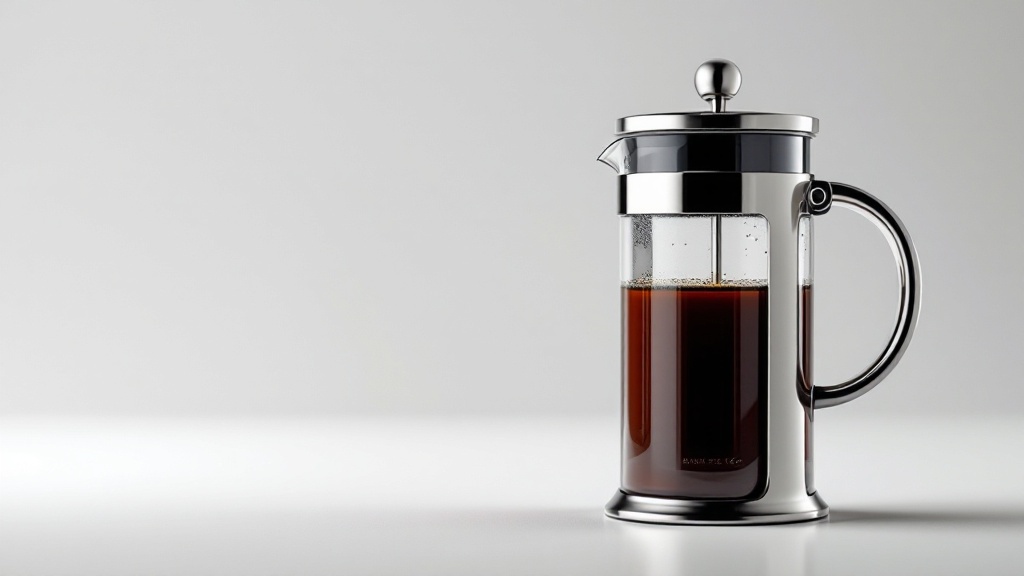
-
Grind the Coffee:
Use a burr grinder for consistent particle size. -
Measure Ingredients:
Adhere to your chosen coffee-to-water ratio. -
Heat the Water:
Use a gooseneck kettle for precise pouring. -
Add the Coffee Grounds:
Place the grounds in the pre-warmed French press. -
Bloom the Grounds:
Saturate and stir gently, then let rest. -
Add the Remaining Water:
Ensure all grounds are submerged. -
Steep the Coffee:
Allow the coffee to steep for your chosen time (4-8 minutes). -
Slowly Plunge:
Press the plunger down gently and steadily. -
Serve Immediately:
Avoid over-extraction by serving promptly.

Optimal Coffee Grind Size
The grind size for French press coffee is critical to achieving the desired extraction and flavor profile. A coarse grind, typically resembling sea salt, is recommended to prevent fine particles from passing through the press filter and creating sediment in the final brew. Using a burr grinder, such as the Baratza Encore or Fellow Ode, ensures consistent particle size, which is essential for even extraction. Inconsistent grind sizes, often produced by blade grinders, can lead to over-extraction of fine particles and under-extraction of larger ones, resulting in a bitter and unbalanced cup.
Grind Size for Brewing Methods
- French Press requires a coarse grind to prevent sediment in the cup.
- Espresso machines need a fine grind for optimal extraction and crema.
- Pour-over methods like V60 work best with a medium-fine grind for balanced flavor.
- Cold brew benefits from a coarse grind to avoid over-extraction during long steeping.
- AeroPress is versatile, allowing medium to fine grinds depending on brew time.
Pro Tips and Variations
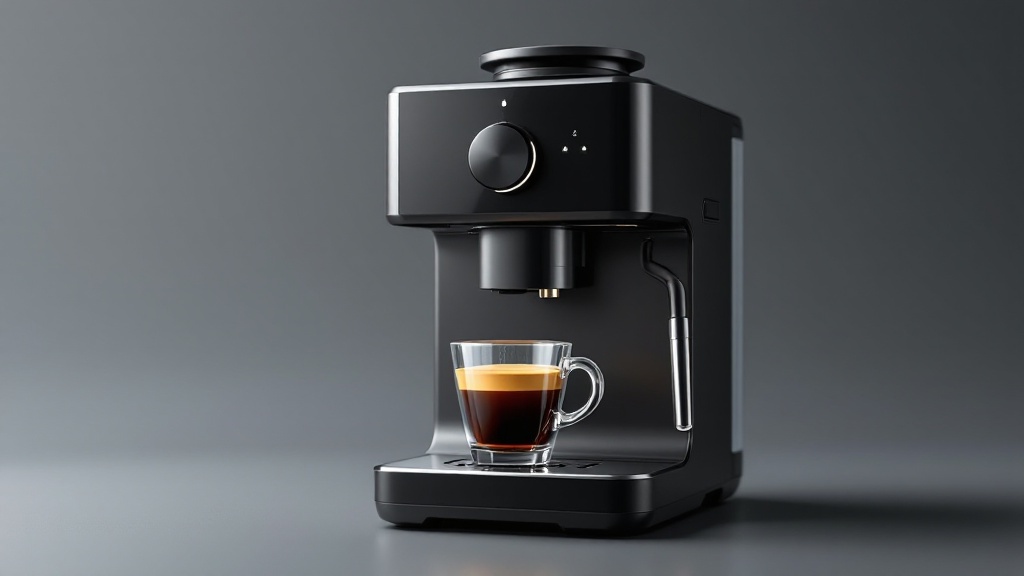
Preheat your equipment:
Warming the French press and mug helps maintain brewing temperature.
Stir at the one-minute mark:
This ensures even extraction throughout the grounds.
Skim the crust:
Removing floating grounds enhances clarity.
Experiment with brew time:
Discover your ideal balance of flavor and strength.
Consider filtering:
A paper filter can remove even more sediment.
The James Hoffmann Method:
Try a 10-minute brew (5 minutes steep, 5 minutes settling) for a remarkably sediment-free cup.
Optimal Brew Time Configuration
Brew time is a critical variable in French press coffee preparation, directly influencing extraction efficiency and flavor profile. The standard recommendation of a 4-minute steep is a baseline, but optimal brew time can vary based on grind size, water temperature, and coffee-to-water ratio. For a medium-coarse grind, a 4-minute steep at 195-205°F (90-96°C) typically achieves balanced extraction, yielding a cup with moderate acidity and body. However, extending the brew time to 5-6 minutes can enhance extraction of deeper flavor compounds, particularly in darker roasts, while reducing bitterness associated with under-extraction.
Factors Affecting Brew Time
- Grind size impacts extraction: finer grinds require shorter brew times, while coarser grinds need longer.
- Water temperature plays a key role; ideal range is 195°F to 205°F for optimal extraction.
- Brew method determines timing: French press takes 4 minutes, while espresso requires 25-30 seconds.
- Coffee-to-water ratio influences brew time; a 1:15 ratio is standard for balanced flavor.
- Altitude affects boiling point, requiring adjustments in brew time for consistent results.
The Advantages of French Press Coffee
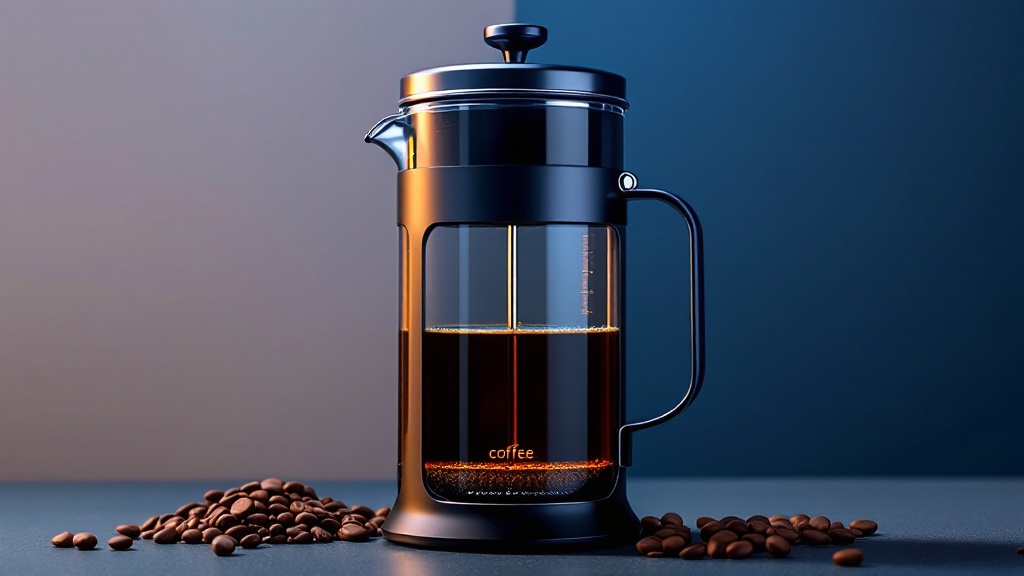
Full-bodied flavor:
Retains more oils and particles for a richer taste.
Customization:
Easily adjust variables to personalize your brew.
Simplicity and affordability:
Minimal equipment needed.
Versatility:
Adaptable for cold brew, tea, or decaf.
Eco-friendliness:
No paper filters required.

Optimal Grind Size Selection
Selecting the correct grind size is critical for achieving the best results with a French press. A coarse grind, typically resembling sea salt, is ideal for this brewing method. The coarse grind ensures that the coffee grounds are large enough to be effectively filtered by the French press’s metal mesh, preventing fine particles from passing through and creating a gritty texture. Using a burr grinder, such as the Baratza Encore or Fellow Ode, allows for precise control over grind size, ensuring consistency across batches. A grind that is too fine can lead to over-extraction, resulting in a bitter taste, while a grind that is too coarse may under-extract, producing a weak and underwhelming brew.
Grind Size Impact on Flavor
- Coarse grinds are ideal for French press, reducing bitterness by minimizing over-extraction.
- Fine grinds suit espresso machines, enhancing flavor intensity with high-pressure extraction.
- Medium grinds work best for drip coffee makers, balancing extraction time and flavor clarity.
- Adjust grind size based on roast level; darker roasts often require coarser grinds to avoid burnt flavors.
- Experiment with grind settings to fine-tune taste, especially for single-origin beans with unique profiles.
Conclusion
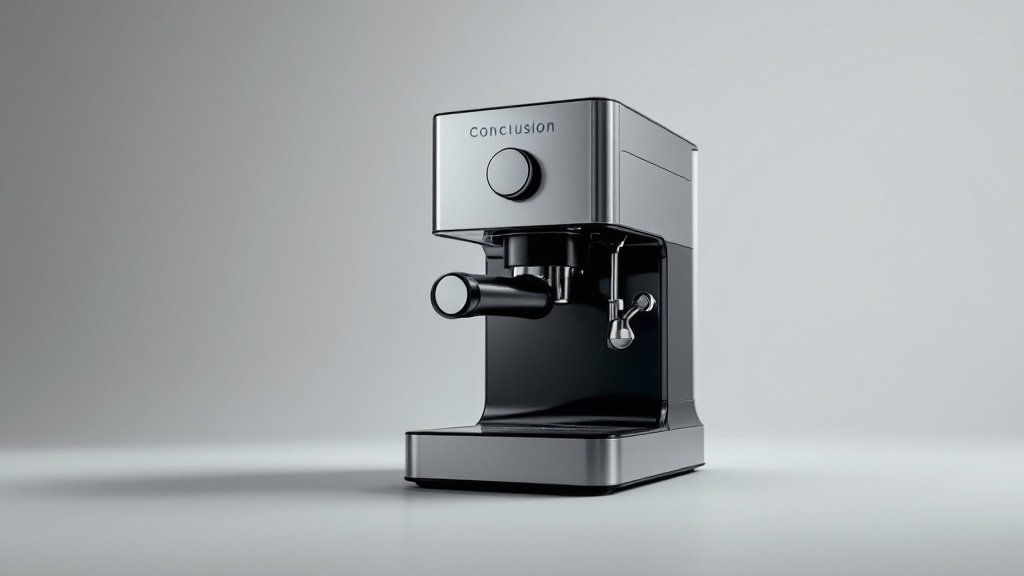
Mastering the art of French press coffee brewing hinges on a few key elements: a coarse grind size, precise water temperature (195-205°F), a well-balanced coffee-to-water ratio (ideally 1:15), and attentive timing. By understanding the importance of each step – from the initial bloom to the final plunge – you can unlock the full potential of your beans and consistently create a rich, flavorful cup. Remember that experimentation is key; don’t be afraid to adjust brew times and ratios to find your personal sweet spot.
The French press offers a wonderfully simple yet versatile brewing method, allowing for customization and a truly immersive coffee experience. Its ability to retain more of the coffee’s oils and natural flavors results in a bolder, more full-bodied brew compared to other methods. Beyond the perfect cup, embracing the French press invites you to appreciate the nuances of coffee preparation, connecting you more directly with the process and ultimately enhancing your enjoyment.
So, gather your equipment, select your favorite beans, and embark on your French press journey! With a little practice and attention to detail, you’ll be brewing café-quality coffee at home in no time. Don’t hesitate to share your brewing adventures and discoveries with us – happy brewing!

